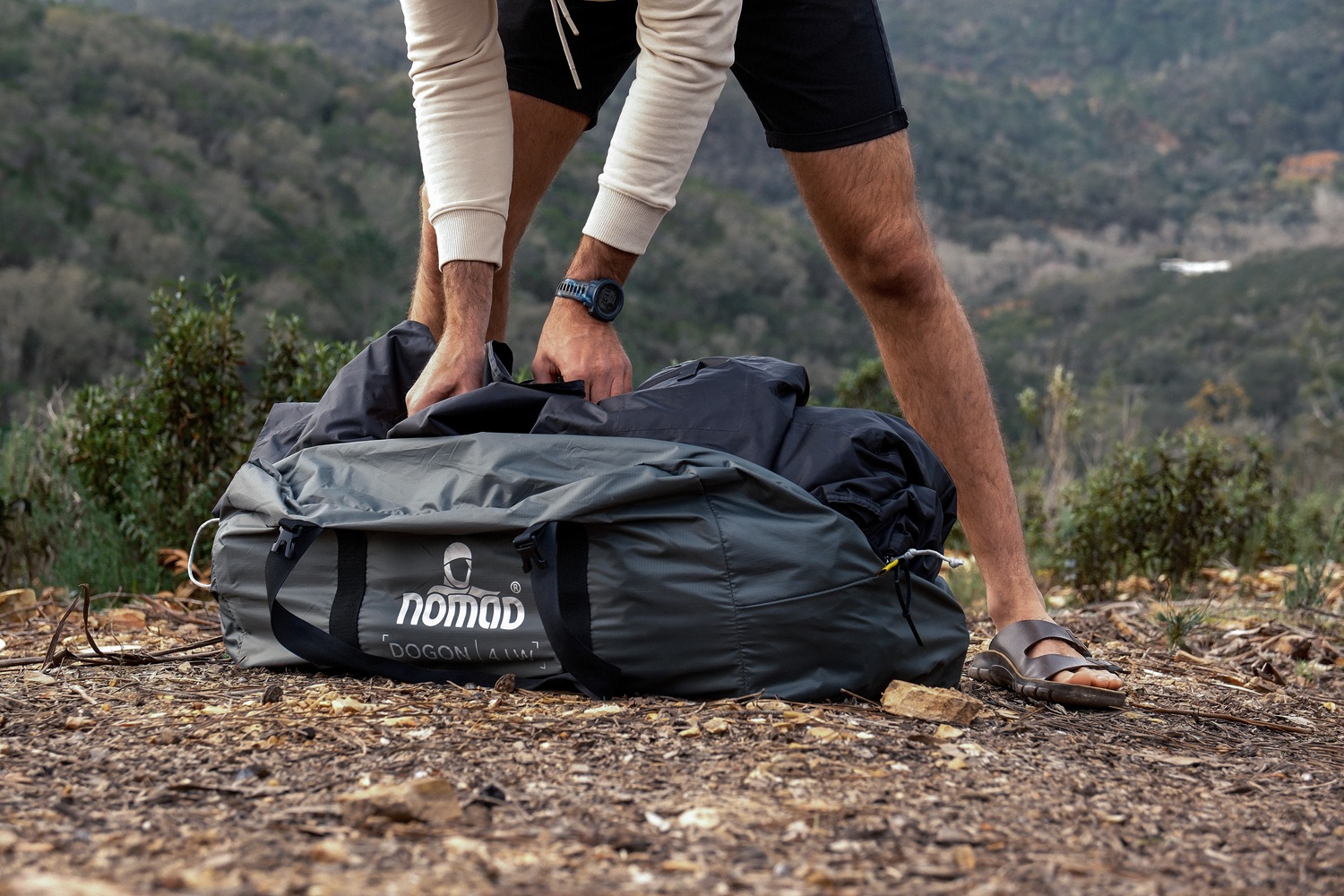Tips for breaking down and storing your tent
You’ve invested in a good tent, and of course, you want to enjoy it for as long as possible. A tent is designed for outdoor use and can withstand rough conditions. But did you know that most wear and tear doesn’t occur when the tent is in use, but rather when it’s stored away? Prevent premature wear by taking care when packing up and storing your tent until your next adventure!

Taking Down Your Tent
The end of your stay is near, and your bags are packed. The only thing left to do is take down your tent. While it’s not difficult, it does require some attention.
- Empty the tent completely and use a dustpan and brush to clean it thoroughly.
- Close all zippers and compartments, but leave the entrance zipper slightly open. This prevents air from getting trapped inside when rolling up the tent.
- Remove the pegs from the ground, rinse off any dirt, and dry them to prevent rust.
- Take out the tent poles and fold them from the middle. Tent poles have an elastic cord that keeps the segments together. If this elastic is strained incorrectly, it can dry out and break faster. To distribute the tension evenly and prevent unnecessary wear, first separate the pole in the middle, then continue breaking it down from the center outward. This ensures the tension remains balanced, extending the lifespan of your poles. Check out our tent pole guide for more maintenance tips.
- Lay the tent flat on the ground and fold all guy lines and loose fabric inward so that everything stays within the groundsheet. Fold any corners inward to form a rectangle. Grab two corners and fold them towards the center, then do the same with the other half. Fold once more into a rectangle, sweeping the groundsheet clean as you go.
- Roll up the tent and store it together with the poles in its carry bag.
- Tip: Always roll the tent towards an opening or ventilation point so that air can escape easily.

Storing Your Tent
Properly packing up your tent makes setting it up at your next campsite much easier. If you're storing your tent for a longer period, it's essential that it is completely dry. If your tent isn’t fully dry when packing up, let it air out and dry completely once you’re home before storing it away. Storing a damp tent can lead to mold, which not only causes an unpleasant smell but also compromises the waterproofing of the fabric.
Make sure to store your tent in a dry and dark place. A damp shed can still cause mold, leading to an unpleasant surprise when you take your tent out again.
At the start of the camping season, it's a good idea to set up your tent at home to check that everything is intact and ready for a new adventure!
Repairing Your Tent
Noticed a small tear in the fabric or missing some tent pegs? It’s always handy to have a repair kit and spare parts on hand, so you can easily fix minor issues yourself. The NOMAD repair patches, originally designed for sleeping bags, can also be used for technical tent fabrics. If a tent pole breaks while on the go, bringing a repair tube allows for a quick fix on the spot.
For larger or more complex repairs, you can visit a specialized service center to get your tent professionally repaired.
